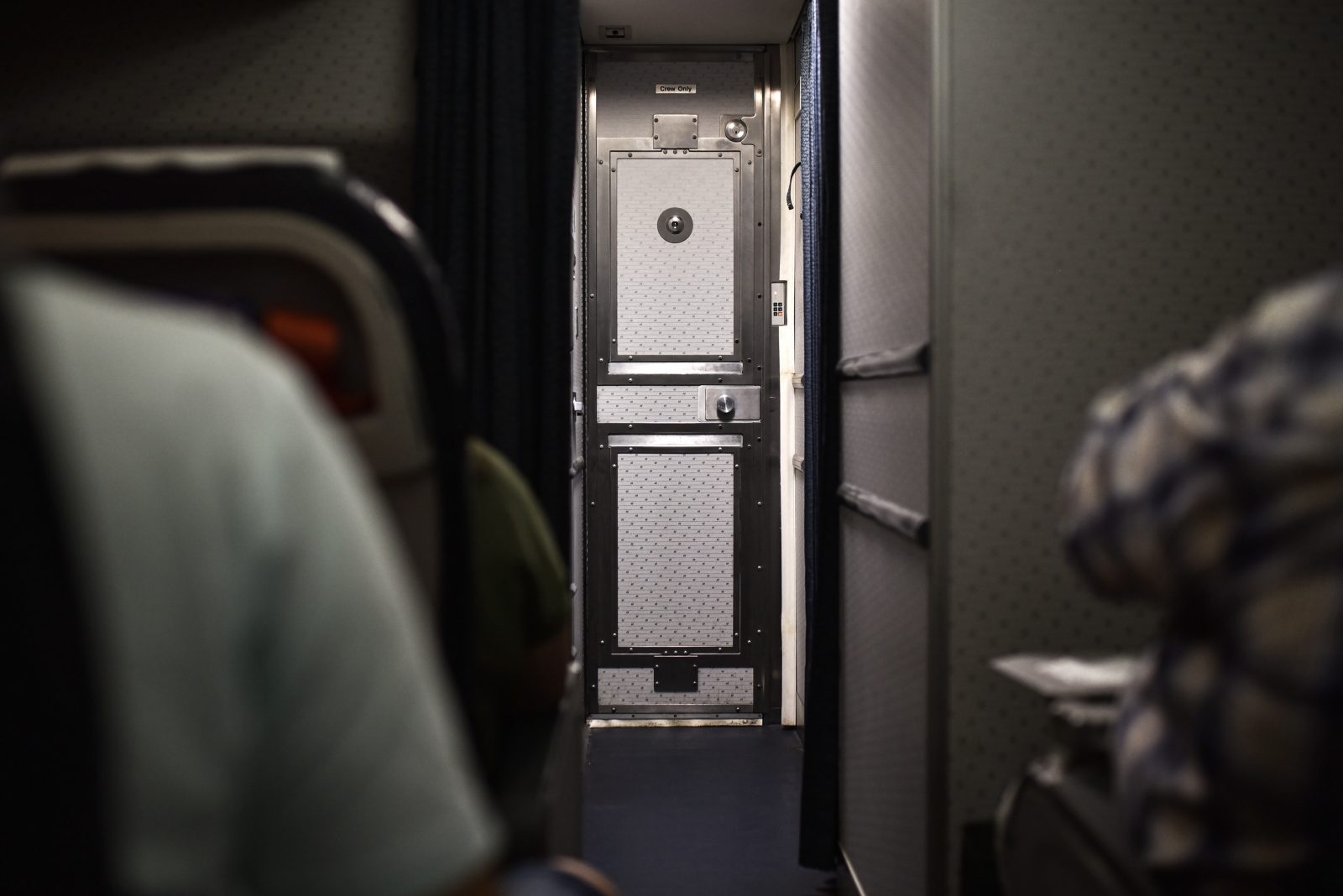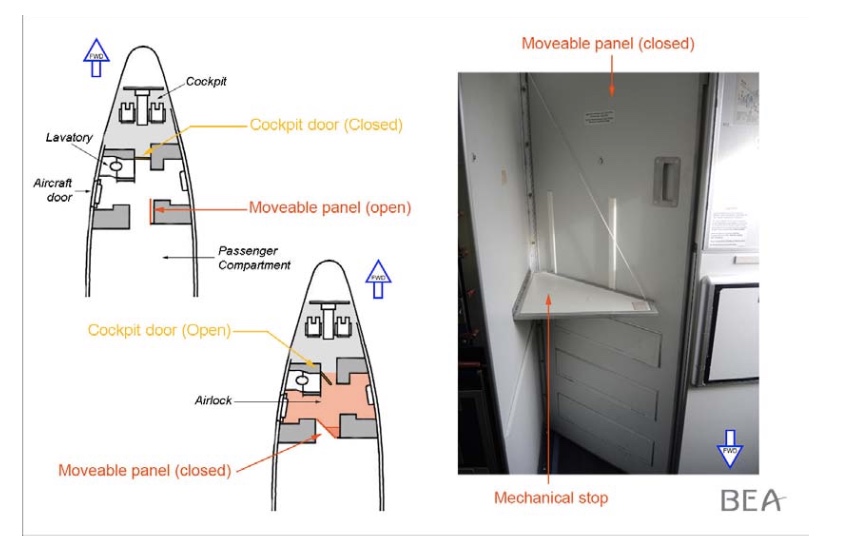
The Federal Aviation Administration (FAA) said on Wednesday that it was pushing ahead with plans to make aircraft manufacturers and airlines install a second barrier to protect the flight deck from terrorists or violent criminals.
Congress approved legislation to make the ‘secondary flight deck door’ a reality several years ago but, until now, the FAA has dragged its heels on the issue in what the head of a powerful pilots union said was the agency ‘thumbing its nose’ at lawmakers.

The decision to move the rulemaking process along comes more than 20 years after the terrible events of 9/11 saw the introduction of bullet and grenade-proof flight deck doors.
The ‘hardened’ flight deck door is, the FAA claims, one of the most “prominent and effective layers” of aviation security implemented post 9/11. So far, these flight deck doors have prevented any ‘nefarious breaches’ but the security is not impenetrable.
At some point, the door has to be opened – whether for a pilot to use the lavatory or some other reason. At that, the flight deck is vulnerable to attack and workarounds like rolling a beverage cart between the flight deck and the passenger cabin is far from ideal.
Last September, an unruly passenger aboard a jetBlue flight from Boston to San Juan charged toward the flight deck just as one of the pilots opened the cockpit door. A disaster was only averted when a quick-thinking flight attendant flung themselves in front of the flight deck.
A secondary barrier is designed to address this type of situation by creating a sterile area between the flight deck and the passenger cabin when the flight deck door is open.
“Flight crews keep us safe when we travel to visit loved ones, explore new places and conduct business. They, too, deserve to be protected, and this rulemaking is an important step forward,” commented U.S. Transportation Secretary Pete Buttigieg on Wednesday.
If approved, the rule would only apply to newly built aircraft used by airlines within the United States. There would be no requirement for airlines to install secondary barriers on older jets.
The Biden administration put the secondary flight deck door on its rulemaking priority list last year and members of the public will now have 60-days to comment on the proposal.
Related
Mateusz Maszczynski honed his skills as an international flight attendant at the most prominent airline in the Middle East and has been flying ever since... most recently for a well known European airline. Matt is passionate about the aviation industry and has become an expert in passenger experience and human-centric stories. Always keeping an ear close to the ground, Matt's industry insights, analysis and news coverage is frequently relied upon by some of the biggest names in journalism.








Has anyone considered that this may not be a good idea? ALL for safety – but it is very possible a bad actor could lock themselves in this so called “sterile air lock” between the cabin & cockpit when a flight attendant is not in the front. Then locking out the rest of the crew. There are countless times I have visited the front lav with no flight attendant in the front galley. There has to be a way to prevent a passenger doing this, or it could turn into a liability for airlines and passengers very quickly.
I am a door. I am painted blue. My pronouns are xe/xem.